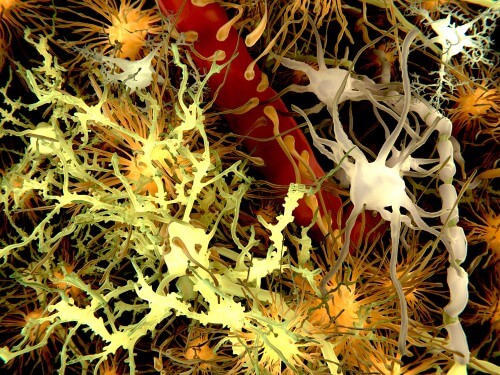The technology can lead to the development of neumorphic computers that will accelerate cognitive computing and the analysis of the large amount of information collected in the "Internet of Things"

IBM scientists succeeded, for the first time, in creating spiking neurons using two-phase materials to store and process the information. This achievement marks a significant step towards the development of neuromorphic technologies, particularly dense and energy efficient, for use in cognitive applications.
Taking inspiration from the structure of the human brain and its mode of operation, scientists assumed, for decades, that it would be possible to imitate the diverse computing capabilities of populations of neurons. But, doing it, in practice, with a compactness and power that would be comparable to the biological system, seems to be a significant challenge - until now.
The results of the study appeared last week in the cover of the monthly journal Nature Nanotechnology.
The artificial neurons developed by scientists from IBM's research laboratory in Zurich contain two-phase materials including germanium antimod telluride which appears in two stable phases: one, amorphous, without a defined structure and the other crystalline with structure. These materials are the basis for the rewritability of Blu-ray discs. But, the artificial neurons do not store digital information. They are analog, just like the synapses and neurons in the human brain.
In the published demonstration, the group of scientists applied pulses to the artificial neurons, the result of which was a progressive crystallization of the phase-change material that, in the end, caused the neuron to "fire". In neuroscience, this function is known as the "Integrate and fire" feature of the biological neuron, when the nerve cell's stimulation threshold is crossed and it transmits signals to another nerve cell, and initiates itself in preparation for another event. This is the basis of event-driven computing and, for example, the way our brain generates a response when we touch something hot.
To leverage this feature, even a single neuron can be used to detect patterns and discover correlations, in real time, in event-driven data streams. For example, in the Internet of Things, sensors can collect and analyze large volumes of collected weather data to provide rapid forecasts. The artificial neurons can also recognize patterns in financial transactions to find discrepancies or use data from social media to identify cultural trends in real time. Large populations of these fast neurons, which are nanoscale and energy efficient, can be used in neuromorphic processors that share memory location and processing units.
IBM scientists have managed to organize hundreds of artificial neurons into populations and use them to represent fast and complex signals. Moreover, the artificial neurons have shown that they are capable of sustaining billions of alternating circuits that can parallel many activity changes at an update frequency of 100 Hz. The energy required for each neuron update was less than five picojoules and the average power less than 120 microwatts (in comparison, 60 million microwatts are required to illuminate a 60-watt lamp).

2 תגובות
As a fan of artificial cheese, for years I have been thinking about the ineffectiveness of neuron simulations on silicon and that it is necessary to imitate the operation of neurons without an intermediary in some chemical-physical way
This is definitely the most significant breakthrough made in the field in the last twenty years...
How beautiful, more and more breakthroughs on the way to artificial intelligence.